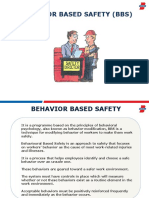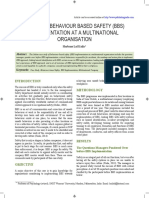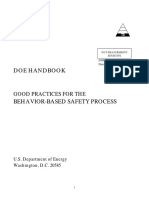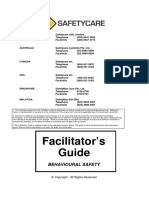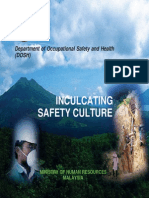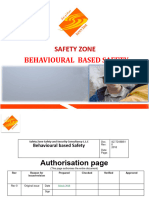0% found this document useful (0 votes)
697 views23 pagesBBS for Workplace Safety Leaders
Behavior Based Safety (BBS) is an approach that creates a safety culture by focusing on safe behaviors. It looks at how a person's behavior interacts with their work environment and aims to actively improve safety through observation, feedback, and acknowledging workers for safe practices. BBS training reduces injuries by establishing a culture of safety using observation, feedback, and positive intervention to address both safe and unsafe behaviors. For a BBS program to be effective, it requires participation and buy-in from all levels of a company through continuous measurement, communication, and reinforcement of safe behaviors.
Uploaded by
Kouroufia Diaby GassammaCopyright
© © All Rights Reserved
We take content rights seriously. If you suspect this is your content, claim it here.
Available Formats
Download as PPTX, PDF, TXT or read online on Scribd
0% found this document useful (0 votes)
697 views23 pagesBBS for Workplace Safety Leaders
Behavior Based Safety (BBS) is an approach that creates a safety culture by focusing on safe behaviors. It looks at how a person's behavior interacts with their work environment and aims to actively improve safety through observation, feedback, and acknowledging workers for safe practices. BBS training reduces injuries by establishing a culture of safety using observation, feedback, and positive intervention to address both safe and unsafe behaviors. For a BBS program to be effective, it requires participation and buy-in from all levels of a company through continuous measurement, communication, and reinforcement of safe behaviors.
Uploaded by
Kouroufia Diaby GassammaCopyright
© © All Rights Reserved
We take content rights seriously. If you suspect this is your content, claim it here.
Available Formats
Download as PPTX, PDF, TXT or read online on Scribd
/ 23


